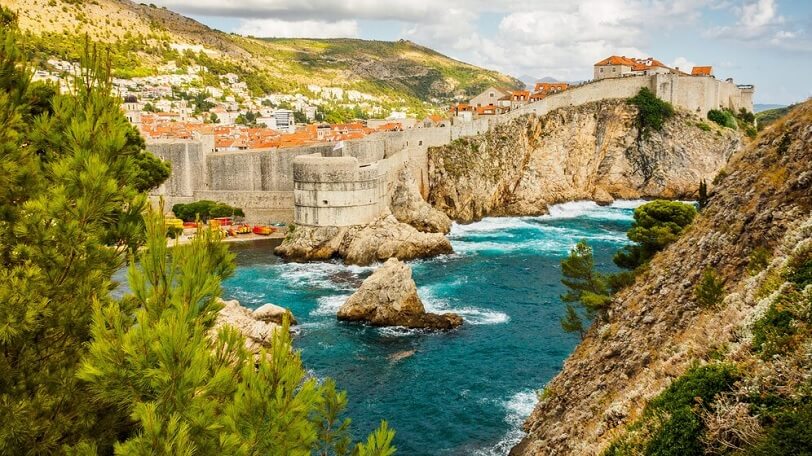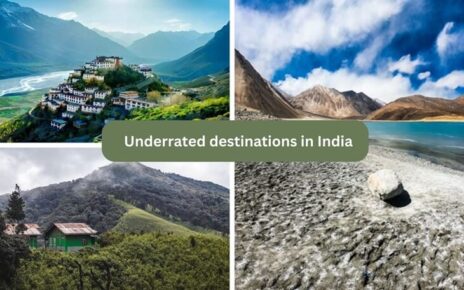Table of Contents
Ever dreamt of azure waters kissing golden shores, ancient towns whispering tales of yore, and landscapes so pristine they take your breath away? Europe has unveiled its best-kept secret—Montenegro. Less trodden, utterly enchanting, and nestled on the Adriatic’s shimmering coast, this Balkan wonder is the refreshing travel diary entry every European wanderer yearns for. Dive into Montenegro, where every cobbled lane is an invitation and every sunset a masterpiece.
Montenegro, often overshadowed by its Balkan neighbours, is a treasure trove of pristine beaches, ancient towns, and awe-inspiring fjords. Let’s journey together through this Adriatic gem and uncover stories etched into its landscape.
Montenegro may be one of Europe’s smallest countries, but it compensates with a vast tapestry of cultural and natural wonders. The coast, stretching over 290 km, is dotted with quaint towns, medieval fortresses, and stunning bays, each telling tales from its rich maritime history.
Weather and Best Time to Visit
Montenegro boasts a Mediterranean climate. Summers (July to August) are warm, with temperatures around 27°C to 30°C, while winters are mild but wetter. The shoulder months, May-June and September-October, offer pleasant weather and fewer crowds.
Top Sightseeing Regions in Montenegro
Your next great European adventure starts here. Here are brief descriptions of the top sightseeing regions in Montenegro.
1. Kotor Bay: Europe’s Southernmost Fjord
Not many know that this bay, often mistaken for a fjord due to its dramatic cliffs plunging into deep blue waters, is a submerged river canyon.
- Historical Significance of Kotor
Kotor’s fortified walls, which stretch over 4.5 km, are a testament to its strategic importance during Venetian rule. These fortifications and its medieval architecture have cemented its status as a UNESCO World Heritage Site. - Must-visit Spots
The Old Town of Kotor is a labyrinth of narrow lanes, historic churches, and bustling squares. The Cathedral of Saint Tryphon, dating back to the 12th century, is a must-visit. For those seeking unparalleled bay views, the 1,350 steps to San Giovanni Fortress are worth the climb.
2. Budva: The Ancient Party Town
One of the Adriatic’s oldest settlements, Budva, is over 2,500 years old but still knows how to throw a party.
- The Riviera’s Vibrant Nightlife
While Budva’s history runs deep, its nightlife pulses with modern vibrancy. The Sea Dance Festival brings global artists and energetic crowds to its beaches every summer. - Budva’s Old Town
Enclosed within medieval walls, the old town hides historic churches, Venetian-style buildings, and the Archaeological Museum, housing artifacts from the Illyrian era.
3. Sveti Stefan: A Pebbled Peninsula of Prestige
This tiny islet, connected to the mainland by a narrow causeway, once sheltered 12 families. Now, it’s a luxury resort.
- History of Sveti Stefan
This fortified village, with its rustic red-tiled roofs, saw the golden era during the 15th century when it thrived in maritime trade. - Exploring Around
Apart from its luxury suites, the olive groves, and hidden churches like St. Stefan Church with its 15th-century frescoes, warrant exploration.
4. Petrovac: The Coastal Oasis
While less frequented, Petrovac offers a blend of sandy beaches, historical landmarks, and unparalleled serenity.
- Historic Remnants
The 16th-century Venetian fortress, Kastio, stands sentinel on a rocky headland. Additionally, early Roman mosaics near the Church of St. Thomas offer a glimpse into ancient life. - Engaging Activities
From boat tours exploring secluded coves to picnics in pine forests, Petrovac brims with leisure options.
5. Ulcinj: The Town of Pirates and Olive Groves
Boasting one of the oldest olive groves in Europe, some trees in Ulcinj are over 2,000 years old!
- Pirate Lore
In its heyday, Ulcinj was a haven for Barbary pirates. The Old Town harks back to these thrilling times with its stone gates and Turkish-inspired architecture. - Nature’s Gift
From the healing mud baths of Ada Bojana to the 12-km-long Velika Plaža, nature’s bounties here are endless.
Travel Tips and FAQs
- Culinary Adventures: Relish the seafood-rich ‘buzara’ or ‘crni rižot’, and wash it down with local ‘Vranac’ wine.
- Money Matters: While Montenegro is in Europe, it uses the Euro. ATMs are widespread, and major credit cards are accepted in most places.
- Language: Montenegrin is the official language, but English is commonly understood in tourist areas.
- Is tap water drinkable? Yes, in most areas, tap water is safe. However, bottled water is recommended.
- What’s the local etiquette for tipping? Tipping is appreciated but not mandatory. A usual tip is around 10% of the bill.
- Is Montenegro part of the EU? No, but it is a candidate country for future enlargement
Montenegro’s coast is a symphony of nature, history, and culture. Each bay and town plays a note, creating a harmonious melody that lingers long after the journey ends. About the Author
Adam Spencer, is a globetrotter who finds stories in sunsets and tales in trails. Dive deeper into travel narratives with their articles and let wanderlust be your compass. Safe travels!




